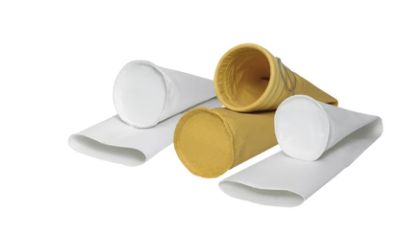Cleaning and maintaining your dust collector filter is essential for ensuring optimal performance and prolonging its service life. Here's a step-by-step guide to help you keep your dust collector filter in top condition:
1. Schedule Regular Inspections:
- Establish a regular inspection schedule to monitor the condition of your dust collector filter. Check for signs of damage, excessive dust buildup, or airflow restriction.
- Inspect the filter housing, seals, and gaskets for any leaks or deterioration that may affect filtration efficiency.
2. Monitor Differential Pressure:
- Use a differential pressure gauge to monitor the pressure drop across the dust collector filter. An increase in pressure drop indicates a buildup of dust and particles, signaling the need for cleaning or replacement.
- Keep a record of differential pressure readings over time to identify trends and anticipate maintenance requirements.
3. Follow Manufacturer Guidelines:
- Refer to the manufacturer's guidelines and recommendations for cleaning and maintenance procedures specific to your dust collector filter model.
- Adhere to any prescribed cleaning methods, tools, or products to avoid damage to the filter media or housing.
4. Shut Down and Lock Out Equipment:
- Before performing any maintenance or cleaning tasks, shut down the dust collector system and ensure it is properly locked out to prevent accidental startup.
- Follow safety protocols and procedures to minimize the risk of injury or equipment damage.
5. Use Appropriate Cleaning Methods:
- Depending on the type of dust collector filter and the nature of the contaminants, choose the appropriate cleaning method:
- Pulse Jet Cleaning: For cartridge filters equipped with pulse jet cleaning systems, initiate cleaning cycles according to the manufacturer's instructions to dislodge accumulated dust.
- Manual Cleaning: For filters without automatic cleaning mechanisms, manually clean the filter elements using compressed air, vacuuming, or brushing techniques.
- Washing: Some filter media may be suitable for washing with water or specialized cleaning solutions to remove stubborn contaminants. Follow recommended washing procedures to avoid damage.
6. Handle with Care:
- Handle the dust collector filter with care during cleaning and maintenance to avoid tearing or damaging the filter media.
- Use gentle pressure when applying cleaning methods to prevent excessive stress on the filter elements.
7. Inspect and Replace Seals and Gaskets:
- Inspect seals, gaskets, and O-rings for wear, damage, or deterioration that may compromise the integrity of the dust collector system.
- Replace worn or damaged seals and gaskets as needed to maintain proper sealing and prevent leaks.
8. Document Maintenance Activities:
- Keep detailed records of cleaning and maintenance activities, including dates, procedures performed, and any observations or issues identified.
- Use maintenance logs to track the condition of the dust collector filter over time and facilitate proactive maintenance planning.
9. Train Personnel:
- Provide training to personnel responsible for cleaning and maintaining the dust collector filter cartridge. Ensure they understand proper procedures, safety precautions, and the importance of regular maintenance.
- Encourage a culture of proactive maintenance and accountability to promote effective filter management and optimize system performance.
By following these steps and incorporating regular cleaning and maintenance into your dust collector system's maintenance program, you can ensure optimal filtration efficiency, extend the service life of your filter elements, and minimize downtime and costly repairs. Prioritize proactive maintenance to keep your dust collector system operating at peak performance and maintain a clean and safe working environment.




.jpg)
No comments:
Post a Comment